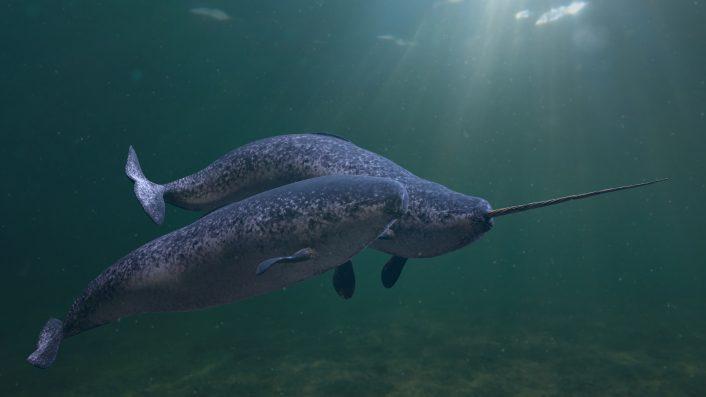Narwhals, Also Known As “The Unicorns Of The Sea,” Have Mesmerized People For Centuries Due To Their Massive Size, Unique Appearance, And Remote Habitats

The deep ocean contains some of the most bizarre creatures on the planet. And one of them just so happens to be the narwhal, the unicorn of the sea!
With its unique, long spiral tusk, the narwhal has become something of an Arctic legend, fascinating people across many cultures for centuries. Here’s a little bit about the strange sea creature.
The narwhal population currently sits at around 80,000. It is considered an odontocete or a toothed whale. However, the narwhal differs from all other toothed whales because it does not have any teeth in its mouth.
Instead of teeth, narwhals have a single tusk protruding from their upper left jaws, which can grow as long as ten feet. The tusk is most commonly found in males. It has sensory capabilities and up to ten million nerve endings. In rare cases, a narwhal can have two tusks!
Narwhals can weigh up to 4,200 pounds and reach 17 feet in length. Their bodies have a black-and-white mottled pattern with white undersides.
They live in the Arctic waters of Greenland, Canada, Norway, and Russia, spending much of the winter under the ice and occasionally coming up for air when needed.
Narwhals have the ability to dive more than a mile into the depths of the ocean. They are one of the deepest diving marine mammals ever. Their diets consist of halibut from Greenland, Arctic and polar cod, shrimp, and squid.
They eat a lot during the winter and slow down their consumption during the ice-free summer season. Scientists believe that the winter feeding period may be the narwhal’s way of adapting to avoid competing with other whales for food in the summer.
Not much else is known about narwhals. Their remote habitats, usually covered in ice, make it a challenge for scientists to study them. With the help of satellite tracking, documenting the movements of narwhals is made somewhat easier.

Photo 189933808 © Planetfelicity – Dreamstime.com – illustrative purposes only, not the actual narwhals
Narwhals face many threats to their existence, such as climate change and oil/gas development. The increased number of ships that enter the waters where narwhals live can result in more collisions. It may also create more noise underwater, disrupting the whales’ communication.
Like all marine mammals, narwhals are protected under the Marine Mammal Protection Act.
If true crime defines your free time, this is for you: join Chip Chick’s True Crime Tribe
It Turns Out That Her Boyfriend Is Married, And She Also Suspects He Has A Son
Sign up for Chip Chick’s newsletter and get stories like this delivered to your inbox.
More About:Animals





